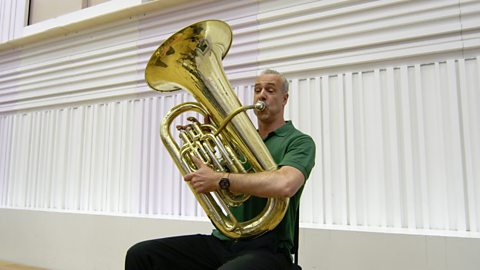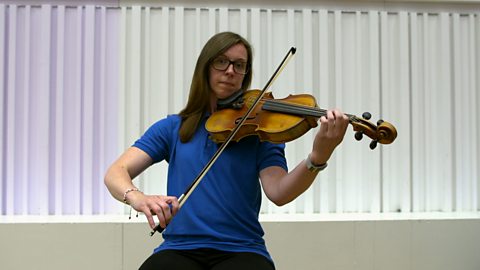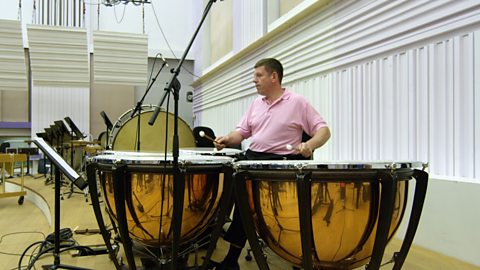Historically woodwind instruments got their name from being made out of hollowed out wood and passing a stream of wind through them to generate a sound. Nothing has changed other than the material they are made from.
What to consider when choosing a brass instrument
Genres: These instruments are very popular because they are commonly used instruments across the different genres including traditional folk, classical and contemporary to name but a few.
Size and weight: As a beginner, you'll most likely start either with a flute, clarinet or alto saxophone because of their size and weight but this does not mean you shouldn't research an oboe or lower-pitched instruments. Braces can be attached to heavier instruments so that the weight can be distributed across the shoulders.
Mouth muscles: A strong embouchure is needed to produce a sound from a reed and non-reed instrument, so practising scales and playing in general will help build endurance. The mouth muscles are used differently than with a brass instrument - the lower lip is tucked under the mouthpiece with a woodwind instrument - so swapping over may take more time than you first think.
Clefs and key signatures: Clefs are symbols written at the start of a piece of music to indicate the pitch range. Next to the clef symbol is a further set of symbols - the key signature - that inform the performer of the upcoming notes that are to be assumed sharp or flat. Learning the different clefs and key signatures is also another skill to develop because woodwind instruments are transposing instruments - the note sounds different to the one written - but is an incredibly important skill for arranging.
What are woodwind instruments made from
Traditionally from wood and clay but most woodwind instruments are now made from plastic, metal or a combination of both.
How to play woodwind instruments
Put simply, the performer has to blow down one end of a tube whilst closing and opening holes along the pipe which will produce a sound from out of the other end.
Most woodwind instruments need a mouthpiece with a reed - a thin piece of wood - to vibrate that will be amplified by the instrument. However, an instrument like the flute does not need a reed mouthpiece and must be blown as if you were blowing across the top of a bottle.
The sound they make
Woodwind instruments like the saxophone and clarinet need a single reed to rest against the mouthpiece but sound quite different.
Clarinets sound mellow because of their long-pure shape and smooth plastic lining whereas saxophones are made of brass so they sound brighter.
Some instruments like the oboe and bassoon feature a double reed mouthpiece which makes the sound much less smooth and has a raspy quality to it. In Sergei ProkofievŌĆÖs orchestral piece, Peter and the Wolf, the oboe plays the part of the duck because of the likeness in sound.
Flutes and piccolos have mouthpieces that need the performer to blow across, as if when blowing into a bottle, which generates a clear and light sound.
Example listening pieces
Gioachino Rossini: La Gazza Ladra (The Thieving Magpie)
Dmitri Shostakovich: Symphony No.5 in D Major, 2nd movement, Allegretto
Edvard Grieg: Peer Gynt Suite No.1, 1st movement, Morning Mood
George Gershwin: Rhapsody in Blue
The flute
Although not the shortest woodwind instrument, it's still measured a little over two feet and can reach very high-pitched notes.
As the flute can produce such a high-pitch sound there are only two to four flautists in an orchestra. Flutes often play some of the key melodies in big classical compositions.
Posture is important when learning the flute. Sitting upright and holding the instrument perpendicular to your mouth will help with airflow, it will also take practice to correctly rest your lip over the blow hole.
With any instrument that requires you to blow air through it, you will need to adjust the volume of airflow to help with pitching and dynamics. Help yourself by taking the time to inhale and exhale before playing so that you are capable of playing longer phrases of music.
Listen to as many different genres of music as possible because the flute is popular in jazz as it is in classical music, and there are techniques particular to specific genres.
The clarinet
Rich in tone at the bottom of its register and bright at its highest the clarinet has been part of classical music since the late 1700s.
Clarinets are light and easy to hold whilst playing as the performer will hold the instrument directly in front of their body, and blow into the mouthpiece. This makes them ideal for woodwind beginners. Like the flute, take time to inhale and exhale before practice so that you're ready to play the instrument.
A clarinet is a single reed instrument, so in order to play the clarinet begin by getting a thinner reed because it will be easier to play than a thicker one. It is also advised that you change the reed regularly as they do fade and can become dirty rather quickly. Slow down their decay by removing them every time you play and storing them in a dry place.
The oboe
An oboe looks similar to a clarinet, except it has two reeds to help produce the sound through the body of the instrument instead of one.
Like the other woodwind instruments the pitch is changed by pressing different keys along the body of the instrument.
The double reed mouthpiece makes the oboe especially difficult to learn because of the difference in the required embouchure to make a sound. Holding the instrument at the correct angle is also crucial to playing the instrument technically correct. This takes discipline but will enable you to play advanced pieces later on.
Reed maintenance is even more important with double reed instruments not only because of health reasons but also the increased ongoing costs.
The bassoon
A bassoon would be nine feet long if it was stretched out but it has been folded in half to make it more manageable for the performer.
Using a double reed mouthpiece a bassoon sounds deeper and warmer in tone than a raspy oboe. Bassoons are pitched similar to a cello.
They are less likely to play a leading melody but have been known to from time to time.
Due to its size a bassoonist needs to be able to hold the instrument. There are straps and rests which can help with this, yet the player still has to be able to reach and stretch their hands across the finger pads.
As well as being another double reed instrument, a bassoon has a long thin extension to the mouthpiece which needs to be cleaned often to avoid a build up of dirt.
More from Bring the Noise
The brass family
Discover the trumpet, French horn, trombone and tuba.

The string family
Explore the violin, viola, cello and double bass.

The percussion family
Learn about the different percussion instruments including timpani drums.
